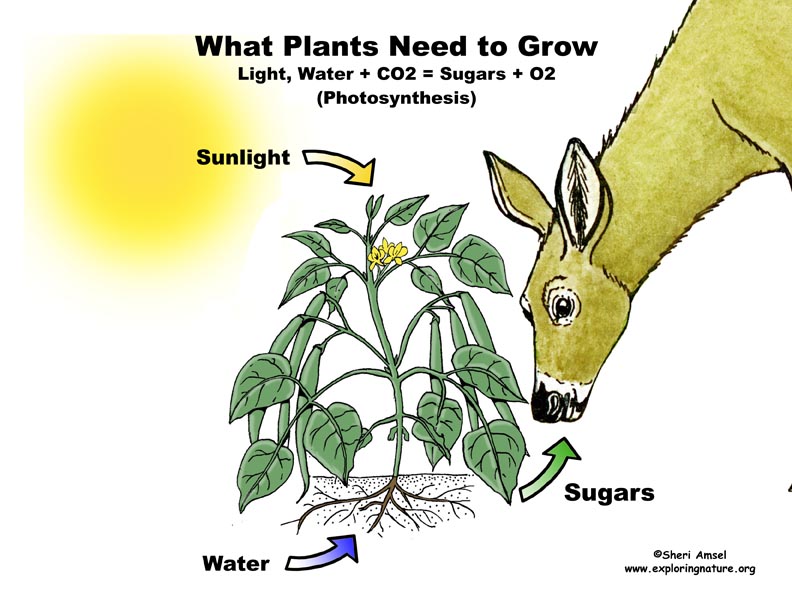

Plants depend on water and light to grow. They collect the water through their roots. They collect the light with their leaves. The leaf is the food-making part of a plant. They use the light, water and carbon dioxide (the gas we exhale), to make sugars for growth and seed development - this is photosynthesis.
The plant's cells have chloroplasts, a specialized organelle containing chlorophyll, a green pigment. Chlorophyll traps the light energy needed for photosynthesis. The cells that contain the most chloroplasts are on the upper surface of a leaf exposed to the sun. The energy absorbed by the chlorophyll helps to change the carbon dioxide and water into sugars, which the plant uses to grow, and oxygen, which the plant releases.
The formula for photosynthesis is: Light + water + CO2 = Sugars + O2
When you research information you must cite the reference. Citing for websites is different from citing from books, magazines and periodicals. The style of citing shown here is from the MLA Style Citations (Modern Language Association).
When citing a WEBSITE the general format is as follows.
Author Last Name, First Name(s). "Title: Subtitle of Part of Web Page, if appropriate." Title: Subtitle: Section of Page if appropriate. Sponsoring/Publishing Agency, If Given. Additional significant descriptive information. Date of Electronic Publication or other Date, such as Last Updated. Day Month Year of access < URL >.
Amsel, Sheri. "Photosynthesis Simplified (Elementary Levels)" Exploring Nature Educational Resource ©2005-2024. December 13, 2024
< http://www.exploringnature.org/db/view/Photosynthesis-Simplified-Elementary-Levels >
